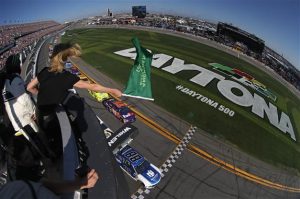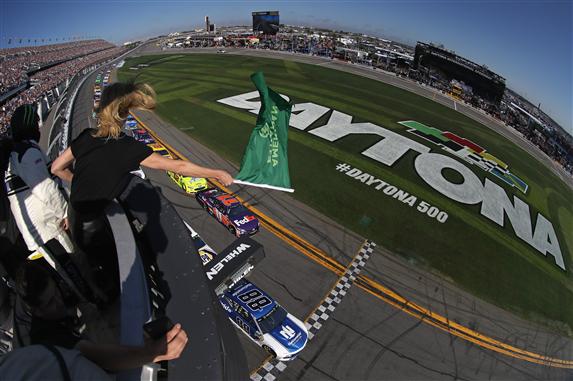
It’s mystifying that Easter decided to happen this year on the first of April, the same day that we normally hear of people pulling pranks on others as part of April Fools Day. It’s either just an odd coincidence, or just by chance this is how it worked out for the 2018 calendar year. In any case, the way the NASCAR season has started, there’s some teams that were pulling no tricks to start out the year.
More specifically, the team that instead reached in for their own bag of tricks is the organization that has outright dominated through the first six races of the season.
Through six races, the Stewart-Haas Racing camp has won four of six races, and possibly could have won five of six races had Aric Almirola pulled off the victory to start the season at Daytona. But instead, let’s look at the reality. Kevin Harvick won three straight races, and did so by literally out-performing everyone in the field, including his own teammates.
The only downfall he’s experienced this year was when his victory in Las Vegas saw a loss of playoff points, a fine, and suspension because of a roof brace breaking and causing the rear window to bow in under acceleration. The issue that came about with this is that it was social media, the fans, that pointed it out to NASCAR during the early part of the week following the win, and ultimately that is what led to the fine. It certainly didn’t help that the right side of the skirting by the exhaust was not of the correct material, but the penalty for the roof got Harvick and his team upset.
Honestly, it’s justified that he felt this way.
Reason being, because of the effect social media has taken on life in general, from Facebook to Twitter, Snapchat to Instagram, the connection the sport has to its fans has become more intimate. But, there is a line that shouldn’t be crossed, because when fans have an effect on critical decisions in a race or after, it’s almost manipulation.
This sort of thing occurred in golf a few years ago, when a fan who was watching an LPGA event posted to the Association’s Twitter that a player made a mistake on a hole prior, and the officials missed it. So officials went back, then checked video footage and talked to witnesses, and ultimately handed down a two-stroke penalty.
Now it may not seem like much, but in golf a lot of times one stroke is the big difference in say winning the green jacket at Augusta and instead just heading to the clubhouse.
In NASCAR, this could be enormous because if fans suddenly are causing an issue by manipulating the race, then true competition has disappeared. The only time a fan really had an effect on a race was a few years ago when a guy seemingly after a lot of liquid courage, also known as a few Budweisers too many, decided to climb to the top of the fence at Richmond, sitting literally above the track. Fans alerted security about the issue, but NASCAR soon saw the problem and put out a caution to fix the situation, and probably save the man’s life, although at the cost of an arrest record.
That case was an extremely unique situation, but when fans who are at home watching on television suddenly become makeshift officials, there’s a big problem.
Fans are there to enjoy the race, and have a good time, not to determine a winner or to point out mistakes from teams. It’s hard to police, because with social media, so many more fans have a way of seeing things versus officials at a race track. But, it’s the officials at the track that make the decisions on if a car passes or fails, then it’s the officials at the Research and Development Center who can further issue penalties during tear down of the race-winning car should anything more come about.
That’s not to say Harvick wouldn’t have won that race without the issue of the brace breaking, which was out of their control. But, it certainly brought up a major debate as to the influence social media has on the sport.
We’re going on a decade of actually having Twitter be a huge part of NASCAR, bringing immediate access to news, the teams, and the drivers on a more intimate level than ever before. Even when the only way fans got immediate access to the sport was via their website, fans had to wait for a few days for penalties and anything new regarding their favorite drivers. Now, it’s literally coming in the moment after the race where a driver’s Twitter page is seeing them post their emotions and feelings on how they ran. Teams even reveal new looks for the week or new sponsors via social media.
Just recently, the Penske team used social media to reveal the scheme for Brad Keselowski at this year’s race at Darlington, the one weekend where NASCAR throws it back to honor it’s heritage, where this year it’s “Seven Decades of Racing” as Darlington honors NASCAR’s 70th anniversary.
Is social media good for NASCAR, absolutely, but it needs to have a limit, and that limit is fans pointing out mistakes from teams, which could lead to a penalty that ultimately could cost a team a win, or even worse a championship.
We shall see how this changes as the year continues, especially with the sport seemingly on a downturn over the last several years.



